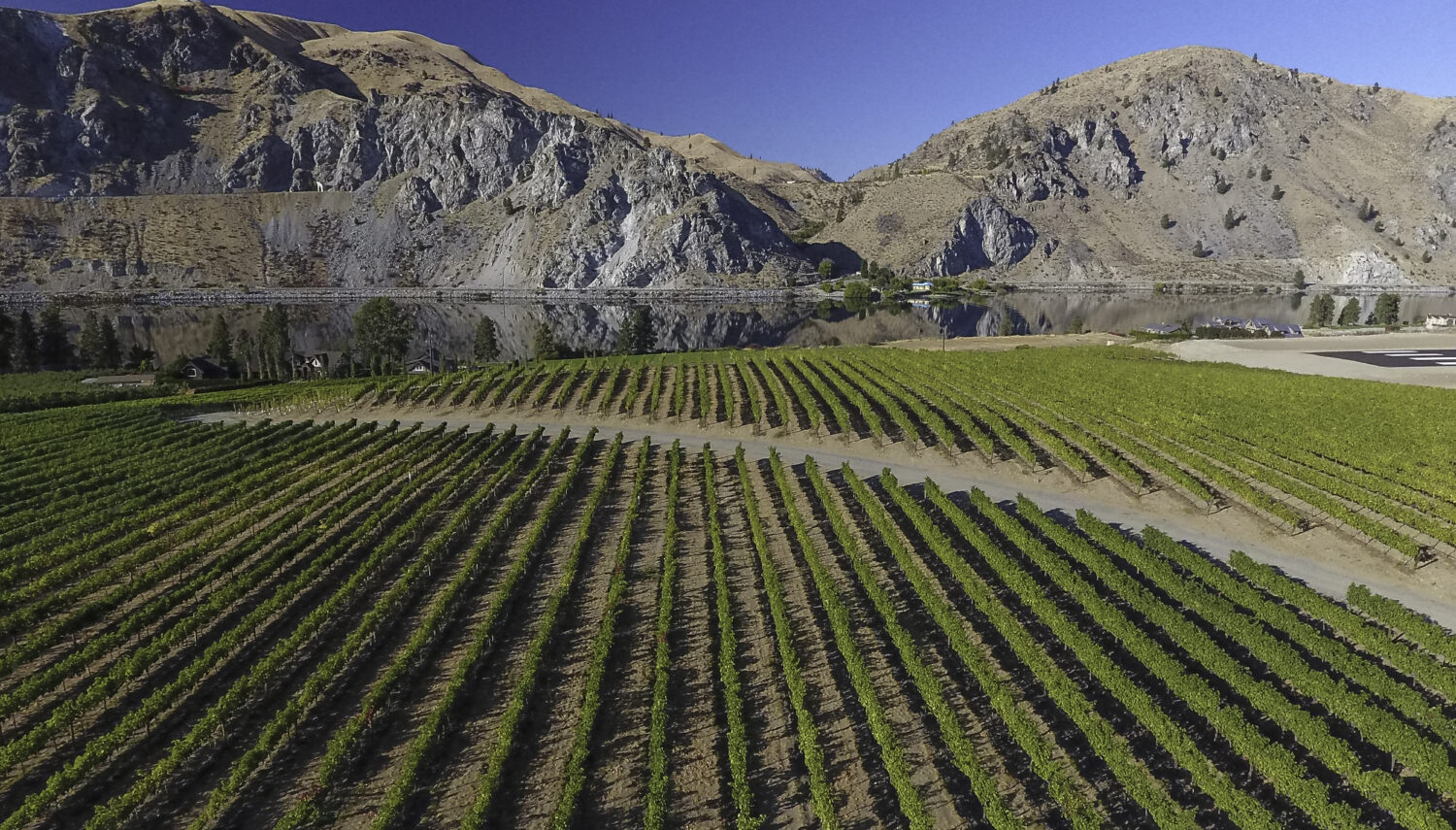Location: Central Washington
Designated: 2022
Total Size: 32,333 acres
Acreage Under Vine: 117 (47 hectares)
Top Varieties: Cabernet Sauvignon
Soils: Loess, cobblestones, and gravel
Average Annual Precipitation: 11 inches
Two Things to Know:
- Rocky Reach has markedly different soils from all other Columbia Valley appellations.
- It is considerably warmer than surrounding areas, allowing a longer growing season.
Rocky Reach is located in the northern reaches of the Columbia Valley, south of Lake Chelan and north of Wenatchee. The appellation straddles the Columbia River and is wholly contained within the larger Columbia Valley.
Rocky Reach gets its name from steamboat captains, who in the late 1800s used the term to describe this particularly rocky stretch, or “reach,” of rapids of the Columbia River. The Columbia River and Rocky Reach Reservoir constitute approximately 24% of the total area within the appellation.

While the appellation has the windblown sand and silt (loess) soils that are ubiquitous throughout the Columbia Valley, in Rocky Reach, these soils overlie cobblestones and gravels deposited by glacial outwash and glacial floods.
The cobblestones on the surface warm quickly and radiate heat to the vines. They also transmit water more efficiently, encouraging vines to root more deeply compared to other areas of Columbia Valley.
Rocky Reach is also unique from almost all other appellations in the Columbia Valley in that it has crystalline basement bedrock, a feature it shares with only Lake Chelan.
This bedrock is largely composed of metamorphosed sedimentary and igneous rocks. These rocks are silica-rich and dominated by minerals such as quartz and mica. Grapevines planted in Rocky Reach that reach bedrock will therefore interact with a different suite of minerals than vines found elsewhere in the Columbia Valley.
In terms of topography, Rocky Reach is located on an area of the Columbia River where the river has eroded a deep canyon. Within this canyon are flat-topped terraces near the valley floor. These flat-topped surfaces are ideal for viticulture and other agriculture and are where most vineyards are currently planted.
Finally in terms of climate, Rocky Reach is located at low elevations within this valley. These lower elevations are considerably warmer and have a longer growing season relative to the surrounding mountains and plateaus, allowing wine grapes to ripen.

